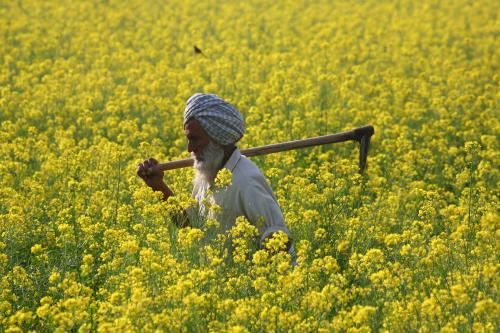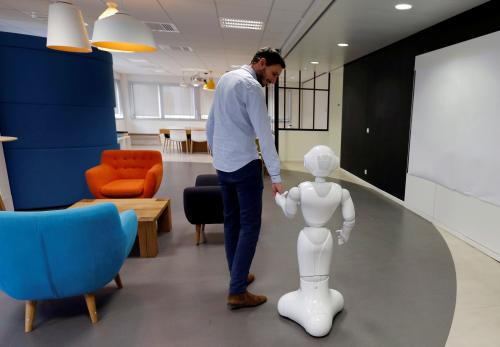It is well established that the participation of women in all economic sectors is pivotal to economic development and, especially, with respect to achieving the millennium development goals. Evidence shows that—compared to men—raising women’s incomes has a higher impact on the well-being of children. Furthermore, women’s well-being—education and health status—has a direct salutary effect on her family’s well-being. Thus, meaningful development should, at its core, aim to include women in all aspects of the economy. Yet, in Africa, women continue to face barriers that prevent their full participation. In particular, women remain excluded from equal access to social and economic capital such as employment, political, financial and social/legal services.
In July 2011, the Women’s World Convention brought together academics and activists from all over the globe. The convention focused on various issues that impact women’s participation in economic development. It particularly focused on economic, political, geopolitical, gender, and academic barriers, as well as the promotion of women’s equality, leadership and security. An emerging theme in the deliberations said that enhanced participation of women in social and economic activities was critical for long-term sustainable development. The convention also emphasized that women are expected to play a key role in contributing towards the achievement of the Millennium Development Goals (MDGs) including poverty reduction, mortality and morbidity reduction, environmental protection, gender equality and women’s empowerment.
Although in many countries there has been substantive progress in advancing women’s participation in economic development, African women’s contribution is severely constrained by access to finance. Women have difficulties accessing finance for various reasons: poverty, limited employment in the formal sector, and cultural barriers to land and property ownership. As data reveals, only 3 percent in Kenya, 1 percent in Tanzania, 20 percent in Zimbabwe of land is owned by women. Their limited ownership creates serious obstacles to accessing capital from Banks and other financial institutions, which usually require collateral for the loans in forms of titles, property and land.
Despite the various impediments to accessing financial services, African women have been able to surpass these problems by forming voluntary groups where they mobilize savings and collectively invest to improve their livelihoods. Women group themselves into informal savings clubs, popularly known as “chamas” in Kenya, “osusus” in Nigeria, “susus” in Ghana, or “Ekub” in Eritrea and Ethiopia. A business daily in Kenya estimated that nearly one out of every two women in Kenya are members.
The structure of these groups is fairly straightforward. Generally, a small group of women form the group based on family ties, friendships or work relationships. They make an informal arrangement whereby each person contributes a certain amount of money into a common pool. This sum is then distributed to one person in the group who uses it for her own individual purposes. After a period of time, the group meets again and the process is repeated with a different individual taking the role as the beneficiary. Eventually, each member is a recipient of the pot and the process begins anew, giving the groups the common analogy to a “merry-go-round.” Other variants of this model have loaned the pooled money to borrowers for interest, or invested in businesses, property or stock—the proceeds from which are shared between members.
The amount of money that these clubs have collectively mobilized is impressive. According to one report, chamas in Kenya have helped accumulate $60 billion Kenyan Shillings, or roughly $600 million US dollars. Their effect on individuals’ lives has been transformative—many African women have enjoyed success—be it ownership of real estate property, farm land, or financial investments — that would have been simply unattainable without such clubs. A salutary benefit of such economic improvement has been social empowerment. With more financial resources at their disposal, women have garnered more decision-making ability in the home and workplace. At the same time, these groups have equipped women with more knowledge and skills—a result of interacting with fellow group mates that represent a diversity of backgrounds. The success of these groups is largely dependent on the low transaction costs of organizing and the trust and commonality of the goals.
Prominent banks in Africa have begun to take note of the phenomenon, offering savings clubs accounts with preferential interest rates on both deposits and loans. As a consequence, it has become much more lucrative to save and borrow as a group than as an individual.
The achievements of the voluntary savings clubs are impressive. The evidence suggests that they are effective in delivering economic progress. These types of informal institutions seem to be more rewarding with immediate results — social, financial and economic. Therefore, they can form useful channels through which aid may be channeled. Traditionally, donors have sought to support development through more formal routes of governments and banks. The savings clubs offer another avenue that can benefit African economies outside traditional means. Furthermore, the impact of aid is much more visible when channeled through the small voluntary institutions as compared to large, often state-managed institutions. Development organizations may possibly consider revising their strategies/policies of delivering aid to African economies to involve these voluntary groups in order to get tangible, quick, visible and effective outcomes.
The Brookings Institution is committed to quality, independence, and impact.
We are supported by a diverse array of funders. In line with our values and policies, each Brookings publication represents the sole views of its author(s).



Commentary
Overcoming Financial Barriers and Exclusion: African Women Saving Clubs
September 15, 2011